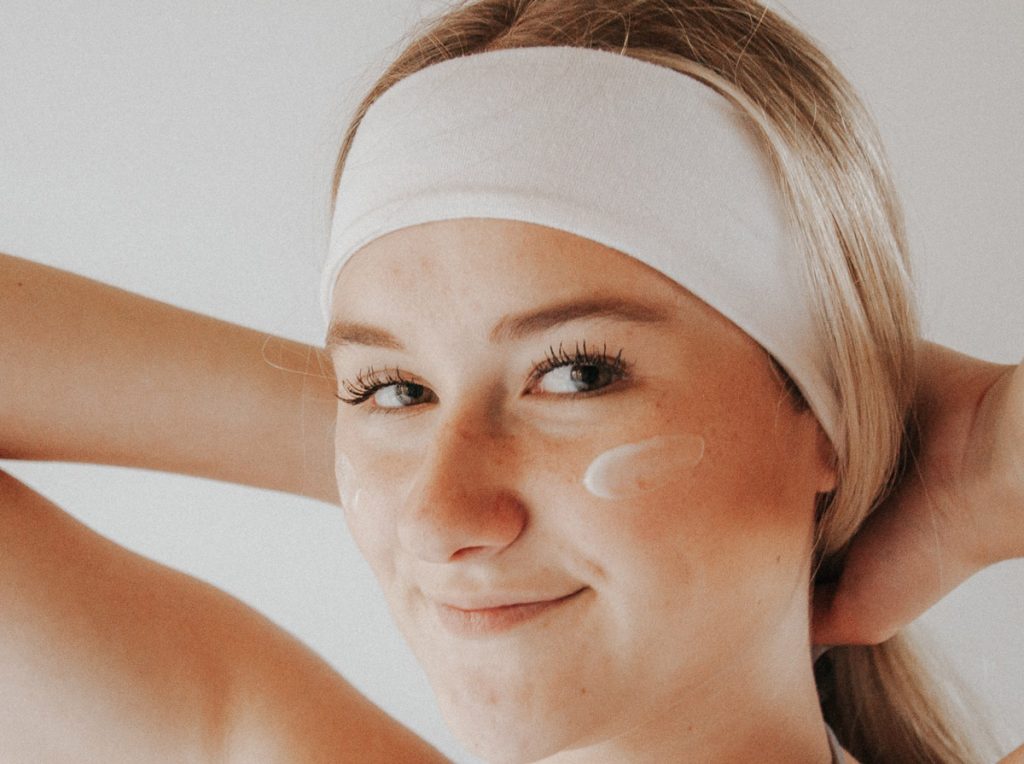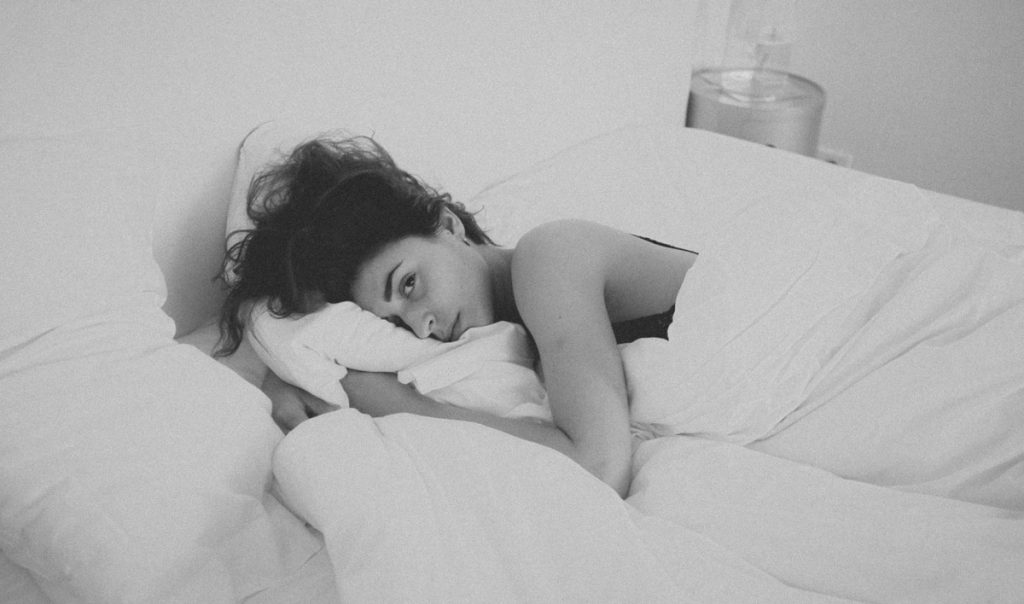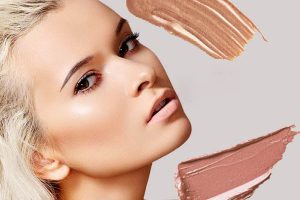It’s no secret that the beauty industry is a billion-dollar empire.
With countless ads trying to sell you every product under the sun its common to feel overwhelmed and confused about which products you actually need to help you achieve your skin goals.
A consistent skincare routine is a key factor for healthy, glowing skin, so it’s important you understand the following steps:
- Only use products that are recommended for your skin concerns/ skin type
- Apply the product correctly
- Layer the product in the correct order in your skincare routine
Below is a step-by-step guide to your morning and evening routine in order of product application
Morning Routine
- Cleanser
- Toner
- Serum/Booster (optional)
- Moisturiser
- Eye Cream
- SPF
- Primer (optional)
- Mineral Makeup (optional)
Evening Routine
- 1st Cleanse (to remove makeup and environmental debris)
- 2nd cleanse (to ensure the skin is clean)
- Exfoliator (twice a week only)
- Hydrating Mask (once or twice a week)
- Toner
- Serum
- Night Cream
- Eye Cream
Now let us explain what each step does and why it is necessary
Morning Routine
Throughout the night dust mites, sweat, saliva and other environmental debris piles up onto your face.
Despite going to bed with a clean and lathered complexion, it is vital for clear skin to clean your skin thoroughly when you wake up.
- Cleanser
If you like to shower first thing in the morning, make sure you cleanse your face with warm not hot water. If the water temperature is too high you can cause inflammation and trauma to the skin which prematurely ages and damages it.
Also, don’t use body wash products on your face. The ingredients that are suitable to clean your underarms won’t be suitable for your face as the ingredients will be too aggressive and stripping.
- Toner
Tone your face less than 1 minute after cleansing. This will help the product absorb better to hydrate your skin and seal your pores.
To read up on why you need to be using a toner in your daily skincare routine, see our blog post on it here
- Serum/Booster (optional)
Depending on your age and skincare concerns serums are sometimes recommended to be worn at night time only.
Consult with your dermal therapist before applying as some serums are rich in vitamins and acids that shouldn’t be exposed to sunlight.
- Moisturiser
Despite the season, keeping your skin hydrated is the most important step to prevent early signs of aging. Your skin is your body’s largest living organ.
When we drink water your skin is the last organ to receive the benefits of this hydration, therefore it’s important to apply topical hydration as well as feeding your body internally.
Hydrated skin will also mean your makeup will go on easily and your skin will have a lovely, plump glow.
If you work in air-conditioning or are travelling, it’s a good idea to carry with you a facial moisturiser to top up your skin throughout the day.
- Eye Cream
The skin around your eyes is the thinnest and most delicate of your whole body which is why it is usually the first area where we show signs of aging.
To counter this, use your ring finger to delicately tap eye cream around the orbital bone to help add moisture to plump and smooth the skin.
- SPF
It doesn’t matter if you work at a desk all day, SPF is an absolutely essential skincare step that you should always remember to apply.
Australia has some of the worlds harshest UV rays which means that even on an overcast day you can be subject to sun damage. The sun is the number one cause of premature aging.
During the warmer months always carry an SPF with you. Just make sure you use an SPF that is oil free and suitable for your face.
- Primer (optional)
If you like wearing makeup then a primer is a great way to make sure your makeup goes on smoothly and doesn’t move throughout the day. If you’re in a hurry, we recommend blending your SPF, moisturiser, primer and cream makeup together.
If you find your face is a bit too shiny from all of the product try a loose mineral powder to easily set the look.
- Mineral Makeup (optional)
Don’t undo all your hard skincare work by applying an artificial, chemical filled makeup product on top. Instead, choose a product with natural minerals and organic ingredients that compliments rather than conflicts with your skincare.
Face Plus Medispa recommends the Aevitas Actives BB Finish or The Alex Cosmetics BB Cream
Evening Routine
When you sleep you are giving your body a chance to recharge and reboot. The same goes with your skin which is why you want to feed it all the proper nutrients.
Going to bed with makeup on is like breathing with a plastic bag over your head. You are essentially cutting of the oxygen supply to your skin which leads to dull, dehydrated and a breakout prone complexion.
Get into the habit of indulging in a consistent night time beauty regime and your skin will reward you.
An evening beauty routine should take you no more than 4-5 minutes. Twice a week however, (we usually suggest a Wednesday and a Sunday) indulge your skin by exfoliating dead skin cells and applying an at home face mask.
This DIY spa is a great way to maintain excellent skin health between your regular dermal appointments. It might bump up your night time routine to around 20 minutes (particularly if you need to wait for your mask to absorb/dry) but if the result is great skin, then we say it’s well worth it.
- 1st Cleanse (to remove makeup and environmental debris)
- 2nd cleanse (to ensure the skin is clean)
Double cleansing is incredibly important as you need to remove all physical and environmental toxins before re-hydrating the skin with topical products. You need to start with a clean canvas.
For certain skin types it might be necessary to vary the kind of product used in the first and second cleanse. For example, if you like to wear a lot of makeup an oil-based cleanser is great to dissolve the makeup product and to lift to dirt/ residue from the face.
Then you can switch to a milk cleanser for the second cleanse as is a gentle way to now focuses on cleaning the skin itself, as opposed to the product layered onto the skin.
- Exfoliator (twice a week only)
There are two types of exfoliator products. A manual exfoliation which usually has a granulated, sand like texture or a chemical exfoliator.
A physical exfoliant is any product that requires a rubbing or scrubbing action, hence the term ‘manual exfoliation’. This could be a scrub that you apply with your hands. Or it could be a tool that does the scrubbing action for you, such as a battery-powered facial brush. Be careful not to over-exfoliate your skin as rubbing in the granules too hard can actually tear/ cause trauma and break down the skin’s protective barrier.
A chemical exfoliator is based on mild acids or enzymes. When these ingredients are applied to skin, they gently dissolve the ‘glue’ that cements dead skin cells together. Unlike physical exfoliants, products containing acids or enzymes require no scrubbing and work gradually.
- Hydrating Face Mask (once or twice a week only)
Whether you prefer a sheet mask, clay mask or overnight mask indulging your skin in a mid-week pamper session is a great way to supercharge your skin with a powerful dose of botanical extracts. We recommend discussing products and applications with your dermal therapist to ensure you’re using a product that’s right for you and your skin concerns.
- Toner
Morning and night, a toner is a no-brainer way to prime your skin to properly absorb your serums and creams.
- Serum
A serum is a skincare product you can apply to your skin after cleansing but before moisturising with the intent of delivering powerful ingredients directly into the skin. Serum is particularly suited to this task because it is made up of smaller molecules that can penetrate deeply into the skin and deliver a very high concentration of active ingredients.
This makes them a great tool for targeting specific skincare concerns, like wrinkles. Serums can be full of moisturising ingredients (hyaluronic acid, ceramides) to help skin retain moisture. But, that doesn’t make them moisturisers in the traditional sense.
Face lotions and creams are richer and create a barrier on top of the skin to keep the serum locked in.
- Night Cream
Is a night cream the same as your daily moisturiser? It can be but it’s recommended you use a more intense product at night to maximise your results.
It makes sense to swap the products once you realise the different functions of the skin from day to night. During the day, the skin plays a defensive role, protecting itself from UV rays, pollution, weather conditions and bacterial growth.
When you’re asleep, the skin is also active, working to repair the damage caused during the day and regenerating itself.
To help the skin in its regeneration mode, you should apply face cream that is specifically formulated to accelerate tissue repair and promote cell renewal. This type of product is commonly referred to as night cream.
- Eye Cream
Nurture the most delicate part of your face and wake up without the panda eyes and sleep lines. To read more about why you should use an eye cream, read our blog post here
So, there you have it. Every product type you need to apply, in which order and why.
We hope we didn’t overwhelm you but after all you only get given one of the skin you’re in. It’s your duty to look after it and make it looks the best it can be.
To book a skin consultation:
Call: 02 8897 0000
Email: [email protected]




